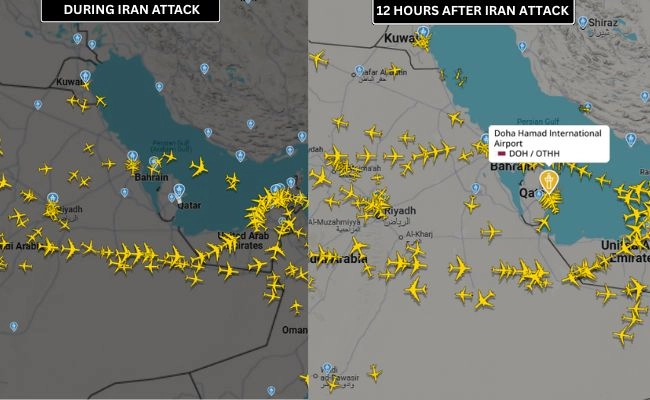Recent images have provided a striking visual contrast in Middle Eastern airspace, showcasing significant changes during and after Iran’s missile attack. The imagery, captured via satellite, illustrates the bustling activity of commercial airliners in the region before the attack, juxtaposed against a stark reduction in air traffic immediately following the incident. It highlights the immediate impact of geopolitical tensions on civilian aviation, emphasizing how quickly the atmosphere can shift from normal operations to heightened security concerns.
During the attack, air traffic over key regions diminished sharply as airlines swiftly rerouted flights or canceled operations altogether, prioritizing passenger safety amid rising fears of retaliation and further conflict. The images serve as a poignant reminder of how military actions can ripple through civilian sectors, disrupting lives and altering travel plans for thousands. In the hours following the attack, the airspace remained eerily quiet, with only a fraction of the usual commercial flights operating, reflecting the cautious approach taken by airlines and air traffic control authorities navigating the precarious geopolitical landscape.
The phenomenon of airspace de-escalation following military hostilities is not new; however, the speed and scale of the reduction observed in these images underscore the significant anxiety experienced by both airlines and travelers. Stakeholders in the aviation industry must continuously assess risk and adapt to rapidly changing scenarios, which can lead to economic repercussions and operational challenges. The contrast depicted in the satellite imagery serves not only as a visual testament to the immediate effects of military actions but also as a catalyst for discussions on the broader implications for international air travel and the ongoing need for diplomatic resolution in conflict zones.




